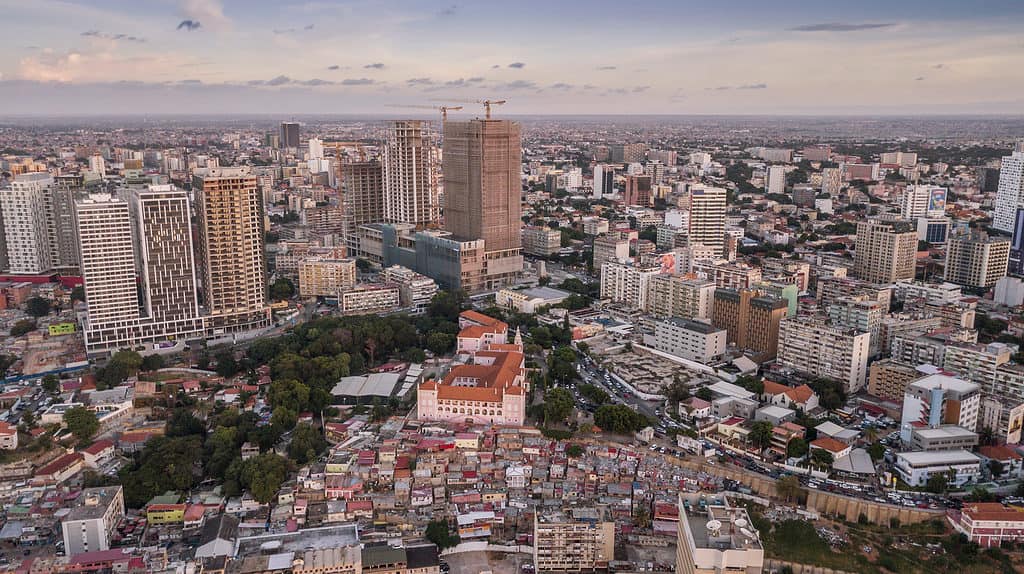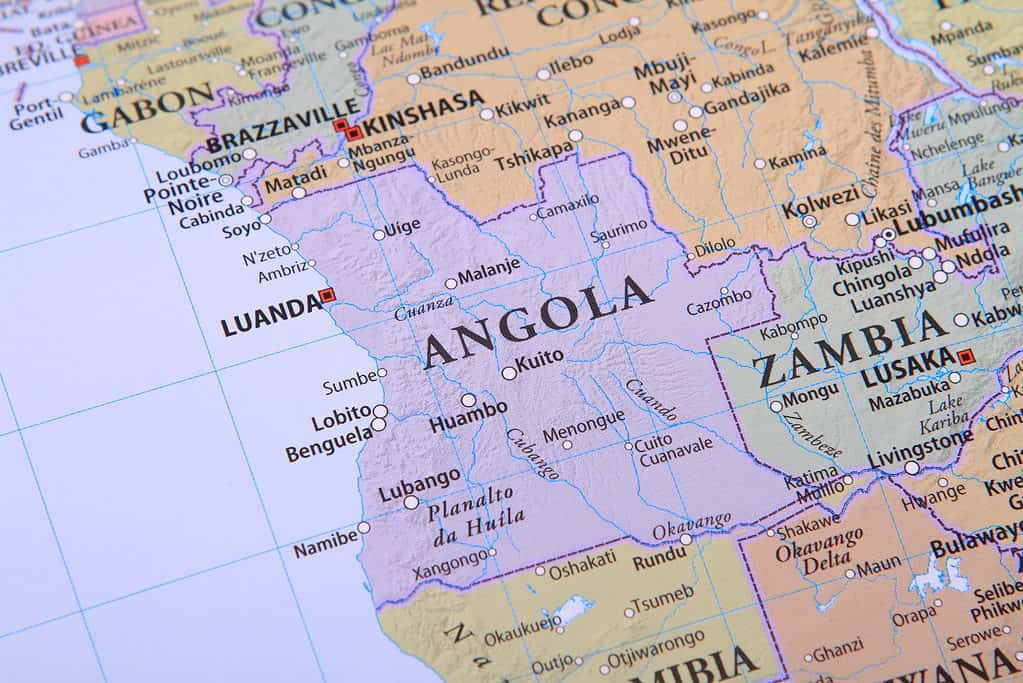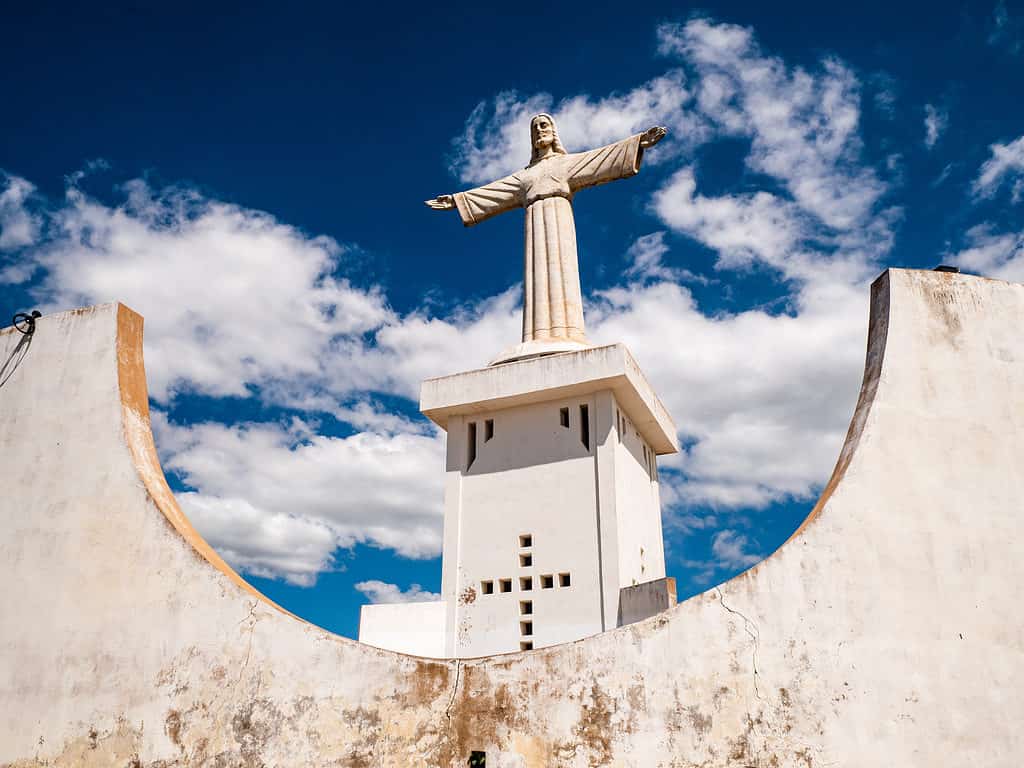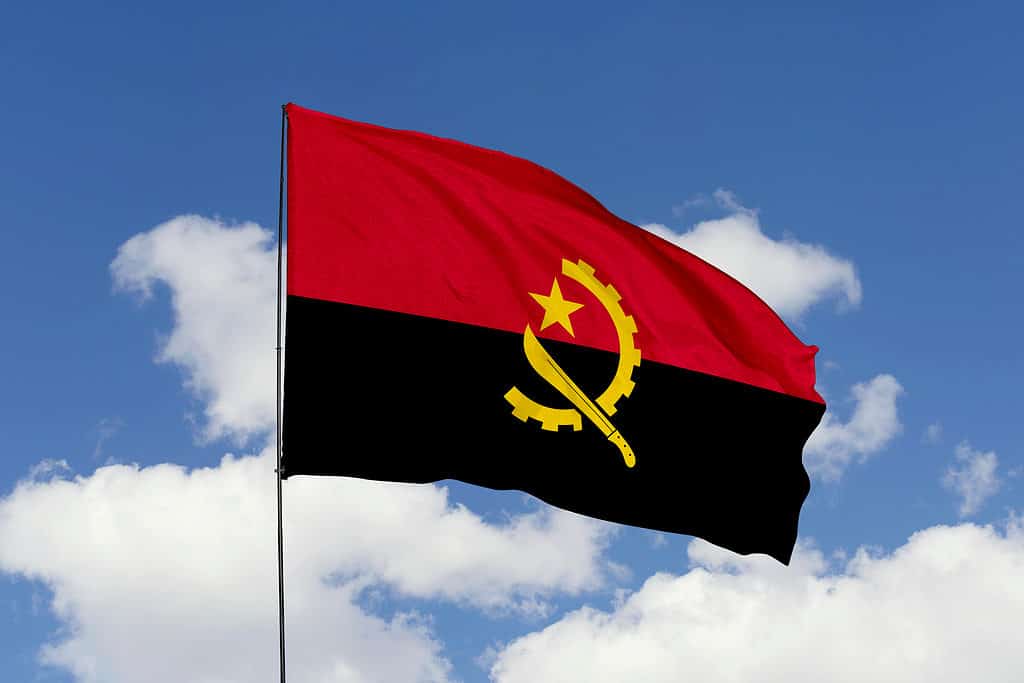Angola, officially called the Republic of Angola, is the second-largest Portuguese-speaking country in the world after Brazil and the seventh-largest country in Africa. About 25,000 years ago (BCE), humans began to settle in what is now known as Angola. The name Angola is derived from the word Ngola, which refers to an iron artifact that the Mbundu and Lunda people used to symbolize royalty. Although many present-day Angolan states began to form approximately 1,000 CE, Angola, as it is known today, did not come to be until after the Portuguese colonization.
Home to almost 33 million people, Angola is a relatively large country. Despite not having as many inhabitants as many other African countries, the people of Angola are one of the most diverse in terms of language and ethnicity. Apart from the indigenous tongues spoken in the nation, Portuguese is one of the most widely spoken languages in Angola, with many people understanding and speaking it as early as the 15th century. The most populous city in the country, which also doubles as its capital, is Luanda. Only Portuguese is spoken in this part of Angola.
Of all African countries, Angola has one of the most exciting stories in terms of colonization. While Angola experienced colonization in the hands of the same people for hundreds of years, do you think their flag stayed consistent throughout this time? Let’s find out.

The most populous city in Angola is its capital Luanda where only Portuguese is spoken.
©Andre Silva Pinto/Shutterstock.com
Founding of Angola
The Portuguese colonial conquest of Angola took place over the course of about 400 years and involved several stages. As mentioned earlier, settlement in the area that is now known as Angola dates as far back as over 25,000 years ago, but the country as it is known today did not take shape until the intervention of the Portuguese. There is a lot that needs to be discovered about the earliest residents of Angola because of the reliance on oral history, inadequate record keeping, and lack of interest on the part of the Portuguese colonial authority in their past.
Angola was colonized by the Portuguese as early as 1575 with the arrival of Paulo Dias de Novais. Although colonization of the country did not start until the 16th century, records show the Portuguese presence in Angola as far back as the 15th century. Portugal founded its first colony, Luanda, in 1575 as the hub of the slave trade to Brazil, along with a few additional cities during the century. The primary reason Portugal came to Angola was for trade (particularly slaves, firearms, and minerals) between the Kongo and the Ndongo kingdoms.
Portugal considered connecting Angola with its province in Mozambique until the late 1880s, but British and Belgian resistance prevented it. Boundaries, which marked the limits of Portuguese claims in Angola, were established by the Berlin Conference in 1884 –1885. The Portuguese encountered numerous armed opposition from diverse Angolan peoples throughout this time. In April 1974, a military takeover in Portugal resulted in the fall of the country’s dictatorship, and three independent liberation forces emerged. The Portuguese left Angola in November of the following year without formally ceding control to any movement, and almost all of the European settlers left the nation. This year marked Angola’s independence, short-lived as they went into a civil war that lasted 27 years.

Portugal founded its first colony, Luanda, in 1575.
©iStock.com/francisLM
Characteristics of Angola
With a size of 481,400 square miles, Angola is the world’s twenty-fourth largest country. Although its citizens speak other African languages, Portuguese is the nation’s official language. This is because widespread educational use of African languages had yet to occur. After all, the government has continued to use Portuguese in official documents, education, and other settings.
Another notable impact of the Europeans on the country is their choice of religion. Despite the fact that Angola is a multireligious nation, Christianity is the predominant religion practiced there. More than half of the population is Catholic, and around a quarter belongs to the Protestant churches that were established during the colonial era. The rest of the people that are not Christian are either Muslims or practice a form of traditional religion.

The Christ the King statue in Angola is a Catholic monument and shrine overlooking the city of Lubango reflecting their Portuguese influence.
©anyisa/Shutterstock.com
History and Symbolism of the Flag of Angola
On November 11, 1975, Angola gained independence, and the country’s flag was adopted that day. With an insignia resting in the middle, it is divided horizontally into an upper red half and a lower black half. Its centerpiece is a star perched above a machete-crossed yellow half-gear wheel. The flag was created by Henrique Onambwé and is based on the one used by the Popular Movement for the Liberation of Angola (MPLA). This group resisted Portuguese colonial rule before winning the Angolan Civil War and becoming the country’s ruling party.
According to the Angolan Constitution, the red portion of the flag represents bloodshed that occurred throughout the colonial era, during the country’s war for independence, and during acts of armed resistance. The black portion represents Africa. In the center emblem, the gear stands for industrial workers and production, the machete for peasants, agricultural productivity, and the armed struggle, and the star for global cooperation and advancement. The emblem’s color, yellow, represents the wealth of the nation.

The red of the Angola flag represents the historical bloodshed, the black represents Africa, and the yellow of the emblem the wealth of the nation.
©Tatohra/Shutterstock.com
The Angolan Flag Over the Years
The flag of the Kingdom of Kongo, which was raised in 1390, is the earliest documented flag in the region of southwest Africa that would become Angola. It had a straightforward, all-white field with a red cross in the middle. However, the Portuguese flag was adopted after the Portuguese conquered and colonized Angola in 1575. This flag was a vertically bicolored flag with green and red, and the Portuguese lesser coat of arms where the two colors joined.
As mentioned, the current Angolan flag was obtained from the People’s Movement of the Liberation of Angola (MPLA). In 1961, this movement started a revolutionary conflict with the Portuguese government. The MPLA decided on a flag with a five-pointed star in the center representing the movement’s communist roots and horizontally bicolored in red and black.
Click here to learn about every single flag in the world!
The photo featured at the top of this post is © iStock.com/Muhammad Fadlan
Sources
- Gettysburg Flag Works, Available here: https://www.gettysburgflag.com/flags-banners/angola-flags
Thank you for reading! Have some feedback for us? Contact the AZ Animals editorial team.






